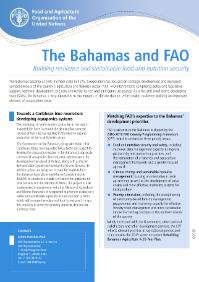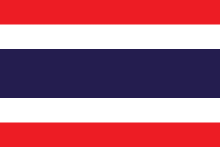The Bahamas and FAO
Resource information
Date of publication
July 2018
Resource Language
ISBN / Resource ID
FAODOCREP:07a4c1b0-3b89-4f30-bc1c-1a96b4a735fa
Pages
2
License of the resource
Copyright details
© FAO. FAO is committed to making its content freely available and encourages the use, reproduction and dissemination of the text, multimedia and data presented. Except where otherwise indicated, content may be copied, printed and downloaded for private study, research and teaching purposes, and for use in non-commercial products or services, provided that appropriate acknowledgement of FAO as the source and copyright holder is given and that FAO's endorsement of users' views, products or services is not stated or implied in any way.
The Bahamas became an FAO member state in 1975. Cooperation has focused on strategic development and increased competitiveness of the country’s agriculture and fisheries sector, with FAO interventions comprising policy and legislative support, technical development projects and rehabilitation and emergency assistance. As a flat and small island developing state (SIDS), the Bahamas is very vulnerable to the impacts of climate change, which makes resilience building an important element of cooperation today.



